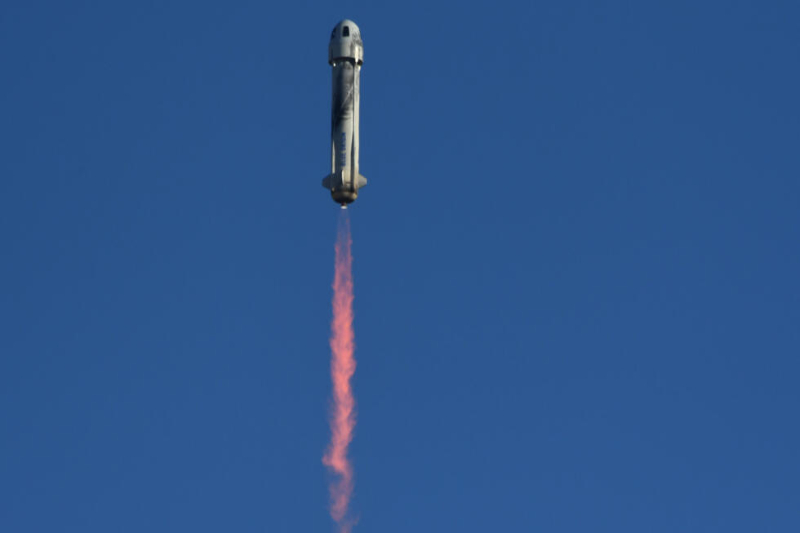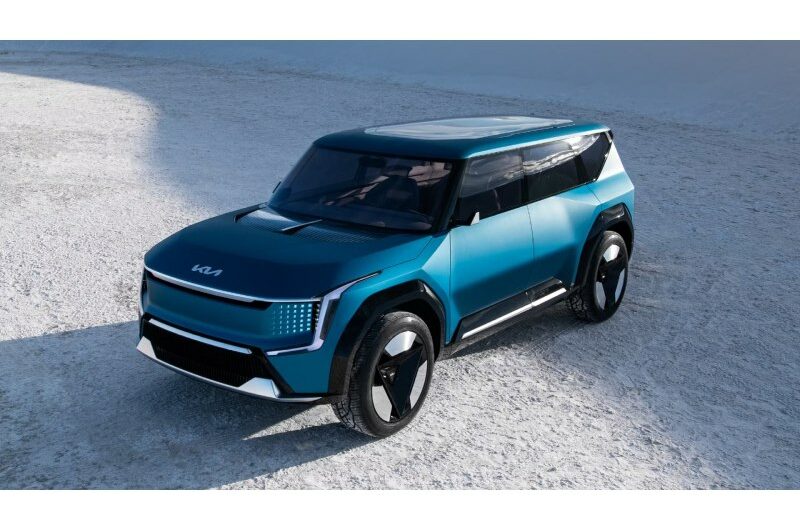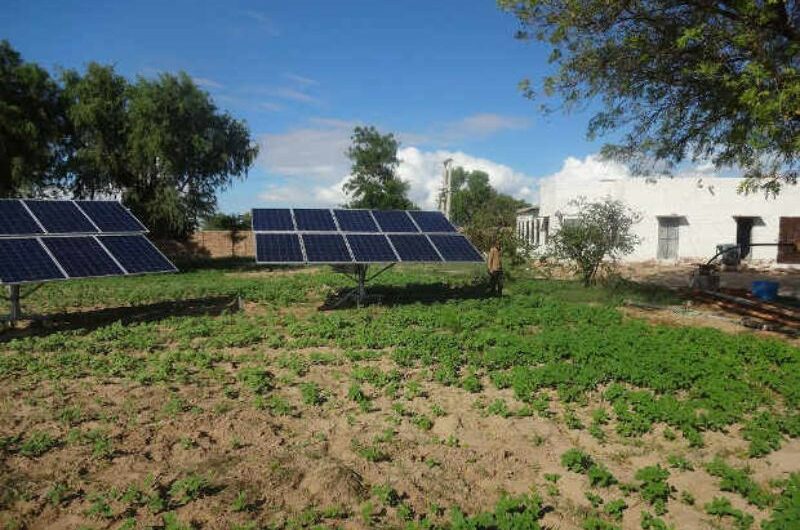On Tuesday, Blue Origin’s New Shepard rocket, carrying a suite of scientific research and technological demonstration missions, took off from West Texas and traveled to the edge of space with modified engine components.
This was the first launch of Blue Origin’s 60-foot-tall (18-meter) New Shepard rocket since September 12, 2022, when the vehicle’s pressurized capsule was aborted in midair due to an engine malfunction that destroyed the booster. On that flight, the capsule successfully detached from the malfunctioning launcher and made a controlled landing by parachute with no people on board.
There were no passengers on Tuesday’s flight either. Instead, 33 payloads from NASA, academic organizations, and private businesses were launched by Jeff Bezos’s space enterprise, Blue Origin. Following their failure to reach orbit on the unsuccessful New Shepard mission last year, some of these payloads were launched once more on Tuesday’s launch. Among these payloads were a microgravity hydrogen fuel cell demonstration experiment and a study on the strength of planetary soils in various gravity regimes.
Atop the rocket, Blue Origin’s capsule carried 38,000 postcards that students had sent in through the company’s nonprofit, Club for the Future.
At 10:42 am CST (16:42 UTC) on Tuesday, the New Shepard rocket fired up its BE-3PM engine and began to ascend from Blue Origin’s isolated launch pad close to Van Horn, Texas, in preparation for its return-to-flight mission. After firing for almost two minutes, the hydrogen-fueled engine cut out as planned, allowing the rocket to continue coasting upward and reach a height of over 347,000 feet (106 kilometers).
After a 10-minute up-and-down flight, Blue Origin’s capsule opened its three parachutes to land on the desert floor, and the booster made a precise propulsive landing a short distance from the launch pad.
With its reusable New Shepard rocket, Blue Origin has carried out 24 missions, six of which have carried passengers barely beyond the globally acknowledged Kármán line, which is located 100 kilometers above Earth.
Phil Joyce, senior vice president of Blue Origin’s New Shepard program, said in a statement, “A special thank you to all of our customers who flew important science today and the students who contributed postcards to advance our future of living and working in space for the benefit of Earth.” “Demand for New Shepard flights continues to grow and we’re looking forward to increasing our flight cadence in 2024.”
People will be transported by Blue Origin “soon.”
Blue Origin’s successful launch on Tuesday puts the business on a road to resume human missions, albeit it took the company 15 months to get back into the air with New Shepard. The majority of Blue Origin’s passengers on these suborbital flights have been invited guests or affluent individuals who want to take a space voyage. Bezos, actor William Shatner, and aviation pioneer Wally Funk have all traveled aboard Blue Origin, anxious to experience space travel. After a brief period of microgravity, New Shepard travelers return to Earth.
Although the cost of a ticket from Blue Origin is unknown, it is said that tickets on a New Shepard flight from the previous year sold for $1.25 million. The cost of a seat on Virgin Galactic’s suborbital spaceship is more than double this amount.
When will Blue Origin resume operating passenger flights? “After a comprehensive analysis of today’s mission, we anticipate launching our next crewed flight in the near future,” stated Erika Wagner, a seasoned Blue Origin manager who co-hosted the organization’s livestream of Tuesday’s flight.
However, “soon” is an incredibly ambiguous term. In March, Blue Origin declared that it would be bringing New Shepard back to flight “soon” after releasing the findings of its research into the launch mishap of the previous year. After nine months, New Shepard was able to take off once more.
Engineers investigating the New Shepard accident from the previous year determined that the launch failure was directly caused by a nozzle failure on the rocket’s BE-3PM. Blue Origin said earlier this year that the engine ran at higher temperatures than anticipated, which resulted in thermal damage to the nozzle.
Blue Origin stated that modifications to the engine combustion chamber’s design and alterations to the operating parameters were among the corrective measures taken to address the root of the malfunction. It was anticipated that these modifications will lower operating temperatures. According to the business, engineers also altered a portion of the nozzle to improve its ability to withstand dynamic and thermal loads.
The Federal Aviation Administration concluded its inquiry into the New Shepard launch mishap in September, and Blue Origin planned to conduct an unmanned return-to-flight mission in early October. But as Ars previously revealed, a problem with certifying an engine element meant for flight forced an extra two months of delay.
Speculation regarding the program’s future arose from the New Shepard rocket’s prolonged grounding, especially as Blue Origin is already intensifying its preparations for the launch of the considerably larger orbital-class New Glenn launcher. Blue Origin only had one New Shepard booster left in its stockpile after last year’s launch disaster; on Tuesday, the rocket completed its ninth space trip.
This specific booster has only been deployed on unmanned research flights. Whether Blue Origin is producing another New Shepard rocket for use in human space missions is unknown.
However, remarks made on Tuesday by representatives of Blue Origin imply that New Shepard will survive. According to Wagner, Blue Origin wants to make New Shepard missions accessible to researchers on next flights so they can conduct direct experiments in microgravity.
Topics #Blue Origin #fifteen months #first flight #suborbital rocket










